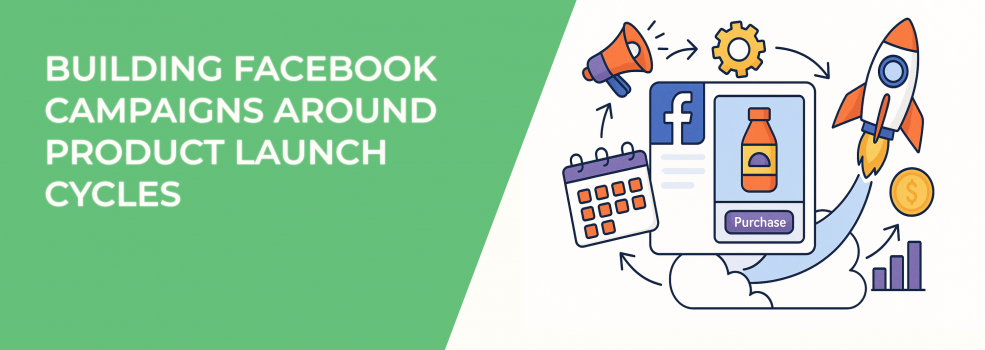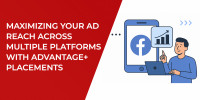Planning a product launch? Don’t just announce it and hope people show up. The most successful brands use Facebook ad campaigns that follow the full launch cycle — from teasing the product to keeping sales strong after it goes live.
If you’re using Facebook or Instagram ads to promote new products, timing matters. A great product launch campaign moves in stages. Each step should guide your audience — warming them up, getting them excited, and encouraging them to act.
Here’s how to build Facebook campaigns that follow your product launch from start to finish.
1. Pre-Launch: Build Interest and Warm Up Your Audience
The pre-launch phase is your chance to get people curious before your product is available. You’re not asking them to buy yet. Instead, you’re preparing them for what’s coming.
Use this stage to:
-
Spark interest with teaser ads.
-
Share behind-the-scenes content or sneak peeks.
-
Collect emails or sign-ups using Facebook Lead Ads.
-
Run short videos that show benefits without giving too much away.
-
Build custom audiences based on who interacts with your content.
You can also run polls or quizzes to learn more about your audience’s needs. This helps you tailor your ads when the product launches.
The goal is simple: build an audience that’s already interested by the time you go live. To go deeper, learn how to use Facebook ads specifically to build a pre-launch audience that’s ready to convert.
2. Launch: Focus on Clear Messaging and Conversions
Your product is now available. This is when your ads should switch from “teasing” to “selling.” The message needs to be clear and direct — what the product is, who it’s for, and why they should care.
If you're unsure what objective to choose at launch, here's a full breakdown of how Meta ad campaign objectives work and which one fits your goal.
During launch, focus on:
-
Highlighting benefits (not just features).
-
Creating urgency with limited-time offers or early discounts.
-
Retargeting people who visited your website or watched your videos.
-
Using Lookalike Audiences based on your warmest leads.
Many advertisers try to reach everyone at once. That usually doesn’t work. Start with people who already showed interest. They’re more likely to convert.
You should also test different ad formats like short videos, carousels, or product demos, but make sure the main message stays the same.
Watch your ad frequency too. People should see your ads often enough to stay interested, but not so much that it becomes annoying. Use a mix of creative formats to keep it fresh.
3. Post-Launch: Keep Sales Going and Grow Trust
Just because the product has launched doesn’t mean you stop advertising. The post-launch stage is a chance to build trust and reach more people.
Use this stage to:
-
Share customer reviews or testimonials.
-
Show real-life product use (user-generated content works well).
-
Retarget people who clicked but didn’t buy. If you haven’t set up retargeting yet, here’s a quick guide on how to create a Facebook retargeting campaign.
-
Answer common questions or concerns directly in your ad copy.
You can also run dynamic product ads to recommend related items. This helps increase the value of each sale and bring people back who might have hesitated earlier.
Post-launch campaigns help extend the life of your ad spend. They also give you the chance to test new angles and figure out what’s working best for your next launch.
4. Align Your Campaign With Your Product Timeline
Want better results? Match your ad campaigns to your product roadmap. If you’re planning to release a feature update, new bundle, or case study — use those as points to refresh your ads.
Ask yourself:
-
What important product updates are coming soon?
-
When will you have new videos, photos, or testimonials?
-
Can your email or influencer campaigns support your Facebook ads?
Your Facebook strategy should follow the same path your product does. When your timeline, content, and ads are all working together, you’ll see stronger performance.]
Final Thoughts
Facebook campaigns work best when they’re built around your product launch cycle. It takes planning, but it’s worth it.
To sum up:
-
Pre-launch gets people curious and builds interest.
-
Launch drives conversions with strong, clear messaging.
-
Post-launch keeps sales going and builds trust.
-
Timing should match your product’s milestones.
When you build Facebook campaigns this way, you don’t just sell a product — you take people on a journey.
Start early. Think in stages. Let your campaigns grow with your product.

